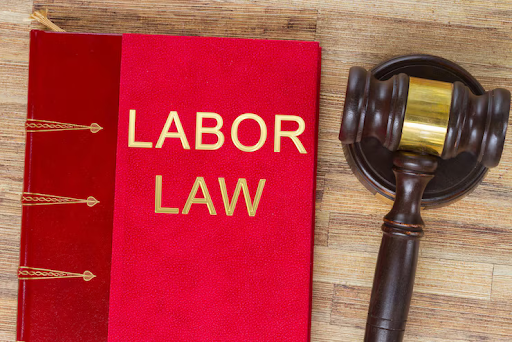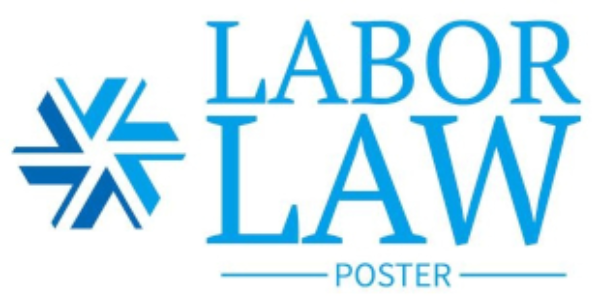2024 Key Changes in Labor Laws: What Employers Need to Know
-
Posted by
incrementors

How well do you understand the changes to labor laws coming in 2024? As now we step into the new year, it is important for employers to stay updated on the shifts in regulations to maintain compliance. One of the simplest ways to keep your workforce informed is through the 2024 labor law posters.
These essential updates are not just a legal requirement but a cornerstone of workplace transparency. In this blog, we will explore the significant changes to labor laws and outline what every employer needs to know to ensure their operations are both informed and compliant.
1. Minimum Wage Adjustments
In 2024, significant changes in labor laws lead to an impact on employers. One of the key areas that see adjustments is the minimum wage policies. These changes aim to ensure fair compensation for workers and address income inequality issues.
Employers need to stay informed about any updates related to minimum wage requirements in their state or locality. Failure to comply with these regulations can lead to penalties and legal consequences.
So, it is essential for businesses to review their current payroll practices and make necessary adjustments accordingly. Having an understanding of the new minimum wage rates and implementing them correctly is crucial to maintaining compliance with the law.
Stay tuned as we delve into more critical updates affecting workplaces in 2024.
2. Expansion of Paid Leave Policies
As the year 2024 comes up with various changes in labor laws there is also the change regarding the expansion of paid leave policies. Employers must stay informed and compliant with these new regulations to ensure a harmonious work environment.
Paid leave policies are evolving to fulfill various needs of employees, including sick time, parental leave, and caregiving responsibilities. This shift aims to promote employee well-being and work-life balance.
Employers need to review their current policies and make necessary adjustments to align with the updated regulations. Clear communication about these changes is essential to avoid any misunderstandings or conflicts within the workplace.
By grasping these expanded paid leave policies, employers can demonstrate their commitment to supporting their workforce’s diverse needs. This approach leads to a positive company culture and it also enhances employee retention and satisfaction levels.
So, according to 2024 labor law posters it is crucial for employers to prioritize compliance while building a supportive and healthy work environment for all employees.
3. Increased Focus on Workplace Safety
Workplace safety is a top priority for employers as we move into 2024. As there a changes in 2024 related to labor laws there is also an increased focus on ensuring that employees are protected from hazards and risks while on the job. Employers must now be diligent in providing a safe working environment, implementing proper training programs, and conducting regular safety inspections.
From enforcing protocols to prevent accidents to addressing potential health concerns in the workplace, employers need to stay proactive in identifying and mitigating safety risks. This will help protect their employees and also help avoid costly fines or legal issues that may arise from non-compliance with safety regulations.
By developing a culture of safety within their organizations, employers can create a positive work environment where employees feel valued and supported. Investing in workplace safety measures demonstrates a commitment to employee well-being while also enhancing productivity and morale across the board.
4. Independent Contractor Classification under the FLSA
The classification of independent contractors under the Fair Labor Standards Act (FLSA) is a change in 2024 which is crucial for employers. Independent contractors are individuals who work independently and are not considered employees, which impacts how they are paid and treated in the workplace.
Employers must accurately determine whether a worker should be classified as an independent contractor or an employee. Misclassifying workers can lead to legal repercussions, including fines and penalties.
The FLSA outlines specific criteria that differentiate independent contractors from employees based on factors like control over work hours, tools used, and level of independence. So it is clear that employers should stay informed about the latest regulations regarding independent contractor classification.
5. Joint Employer Rule under the NLRA
The Joint Employer Rule under the National Labor Relations Act (NLRA) is the rule that says that if two companies both have some control over the same workers, both companies are considered their employers according to this U.S. law about worker rights.
Under this rule, even if a worker technically receives their paycheck from one company, another company could also be considered their employer if it has enough influence over their work conditions. This could include setting their work hours, dictating what tasks they perform, or having a say in hiring, firing, or how they are disciplined.
Why does this matter? It is about responsibility and rights. If two companies are seen as joint employers, they both must follow labor laws and can be held accountable for things like ensuring safe working conditions and respecting workers’ rights to organize or discuss their employment conditions without fear of retaliation.
By understanding the Joint Employer Rule, businesses can mitigate risks and protect themselves from potential legal consequences related to shared employment responsibilities. Stay proactive in staying updated regarding 2024 labor law posters.
Conclusion
To conclude, employer needs to keep up and make sure they are doing everything right. The updated 2024 labor law posters are key tools for keeping everyone at work informed and making sure your business follows the rules.
These changes cover many areas, like making sure everyone gets paid fairly, providing enough time off for personal needs, and keeping the workplace safe. Following these rules shows you care about your team.
To stay on top of these updates, check out our website OSHA Labor Law Posters. You’ll find all the 2024 labor law posters you need there. These posters will help you and your employees know the rules and keep things running smoothly. Don’t wait and make sure you are ready for 2024 by getting your posters now.
FAQS
1 What are the 2024 labor law posters and why are they important?
The 2024 labor law posters include all the latest updates and information about the rights and responsibilities of both employers and employees under the new labor laws. Displaying these posters in the workplace is not only a legal requirement but also crucial for ensuring that both staff and management are aware of the changes and can act accordingly.
2 What should I know about the expansion of paid leave policies in 2024?
The expansion of paid leave policies will now cover more types of leave, including sick time, parental leave, and caregiving leave. This change aims to support employees’ well-being and work-life balance. Employers should review and adjust their leave policies to align with the new laws and communicate these changes effectively to their employees.
3 How does the focus on workplace safety in 2024 differ from previous years?
In 2024, there is an increased emphasis on preventing accidents and managing health concerns within the workplace. Employers are expected to enforce stricter safety protocols, provide comprehensive training, and conduct regular safety audits. A proactive approach to safety can prevent injuries and improve overall workplace morale.

